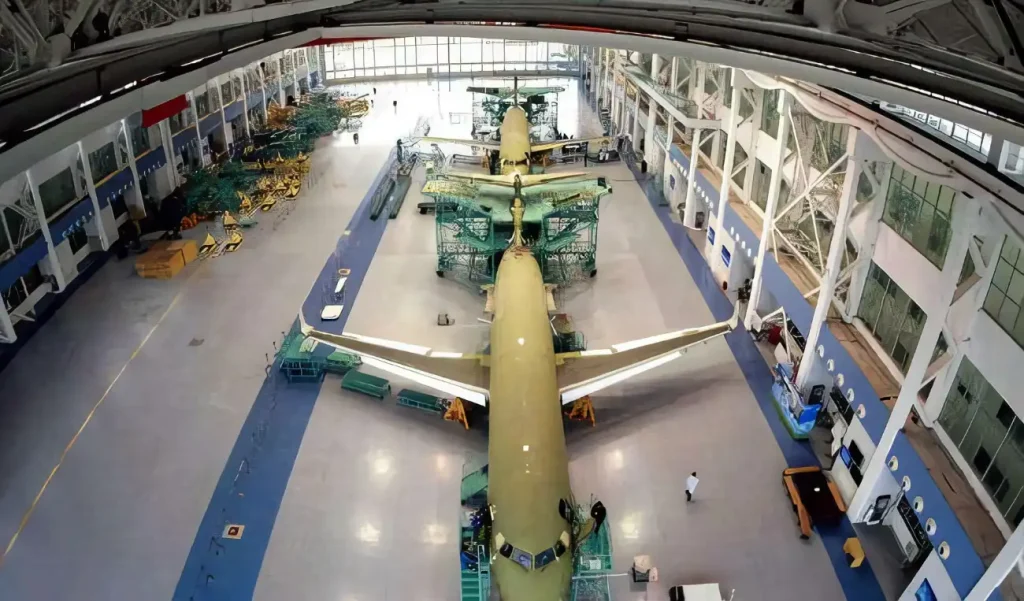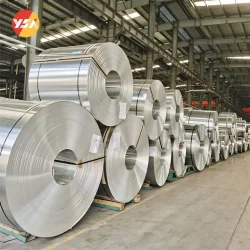Overview
Aerospace grade aluminum is a type of ultra-high-strength deformable aluminum alloy that is widely used in the aerospace industry. Compared to regular aluminum alloys, the aluminum alloys used in aircraft have higher requirements for strength, hardness, toughness, fatigue resistance, and plasticity. Aerospace aluminum alloys exhibit excellent mechanical and processing properties. They have good ductility after solution treatment and are effectively strengthened through heat treatment. They generally possess high strength and good toughness below 150°C (or even higher), making them ideal materials for aerospace structures.
Pure aluminum’s properties often fail to meet the requirements in most applications. To address this, various alloying elements are added to pure aluminum to produce aluminum alloys that meet different performance and application needs. Aluminum alloys have good thermal conductivity, are easily formable, and have relatively low prices, which has led to their widespread use in sectors such as aerospace, transportation, light industry, construction materials, telecommunications, and electronics.
There are various types of aluminum alloys used in aircraft. The primary aluminum alloys used in aircraft structures worldwide are high-strength 2-series alloys (such as 2024, 2017, 2A12) and ultra-high-strength 7-series alloys (such as 7075, 7475, 7050, 7A04). Additionally, there are some applications of 5-series alloys (such as 5A06, 5052, 5086), 6-series alloys (such as 6061, 6082), and a small amount of other series aluminum materials.

Aerospace Aluminum Alloy Features
The main characteristics of aerospace aluminum alloys are: large-scale and integral production, thin-walled and lightweight design, precision in cross-sectional dimensions and positional tolerances, and uniformity and high quality in structural properties. Depending on the different usage conditions and components of aircraft, aerospace aluminum alloys primarily include high-strength aluminum alloys, heat-resistant aluminum alloys, and corrosion-resistant aluminum alloys. High-strength aluminum alloys are mainly used in aircraft fuselage components, engine compartments, seats, control systems, and are the most widely used in the industry.

Aerospace Aluminum Alloys Classification
Aluminum alloys can be classified in various ways. Based on the processing method, aluminum alloys can be divided into two main categories: deformation aluminum alloys and casting aluminum alloys. Deformation aluminum alloys can undergo pressure processing and can be shaped into various forms and specifications of aluminum materials, primarily used in the manufacturing of aerospace equipment. Deformation aluminum alloys are further classified into non-heat-treatable strengthening alloys and heat-treatable strengthening alloys.
Non-heat-treatable strengthening aluminum alloys cannot improve their mechanical properties through heat treatment. They can only be strengthened through cold deformation processing. This category includes high-purity aluminum, industrial high-purity aluminum, industrial pure aluminum, and rust-resistant aluminum, among others.
Heat-treatable aluminum alloys have the ability to improve their mechanical characteristics by experience heat treatment has such as quenching and aging. These alloys can be further classified into different categories, including hard aluminum, forged aluminum, super-hard aluminum, and special aluminum alloys.
In the aerospace industry, the primary aluminum alloys used are heat-treatable deformation alloys, particularly the 2000 and 7000 series. The 2000 series includes alloys like 2024, 2A16 (LY16), and 2A02 (LY6). At the same time, the 7000 series, represented by 7075, consists mainly of aluminum-magnesium-zinc-copper alloys that belong to the aerospace category. These alloys show high strength and fall into the super-hard aluminum alloy classification. They provide good wear resistance and weldability but have relatively lower anti-rust characteristics.
One generally used aerospace aluminum alloy is the 2014 alloy, which is known for its high strength and hardness. It can stand high-temperature environments, making it fantastic for many kinds of uses such as aircraft structures, forgings, thick plates, extruded materials, wheels, structural components, multiple-stage rocket fuel tanks, spacecraft parts, truck frames, and suspension system components.

Aerospace Aluminum Alloys Applications
Aerospace aluminum alloys find widespread application in the aerospace industry due to their unique benefits, including low density, moderate strength, ease of processing and shaping, strong resistance to corrosion, abundant availability, and high recyclability. Aluminum alloys are used in various components of both aircraft and spacecraft. For instance, the skin, beams, ribs, stringers, frames, and landing gear of an aircraft can be constructed using aluminum alloys. Similarly, aerospace vehicles such as passenger cabins, forward fuselages, center fuselages, aft fuselages, vertical tails, flaps, elevators, and horizontal stabilizers utilize aluminum alloys. The quantity of aluminum employed in aircraft varies depending on the specific application.
In the realm of commercial aircraft, aluminum alloys are extensively used, primarily driven by their cost-effectiveness. To illustrate, around 81% of the structural weight of the Boeing 767 passenger aircraft is comprised of aluminum alloys. Certain aerospace aluminum alloys exhibit exceptional performance at low temperatures and can function in environments containing liquid hydrogen and liquid oxygen, rendering them suitable materials for manufacturing liquid rockets. These alloys are utilized in diverse components of the Saturn V launch vehicle, which propellecd the Apollo spacecraft. This includes fuel tanks, oxidizer tanks, intertank sections, interstage sections, tail sections, and instrument compartments.
The aerospace industry utilizes various types of aluminum alloys for specific purposes. For example, the 2024 aerospace aluminum alloy is used in the construction of structural components for aircraft. The 2048 aerospace aluminum alloy finds primary application in manufacturing structural parts for aerospace and weaponry. The 2218 alloy is mainly utilized for aircraft engine and diesel engine pistons, aircraft engine cylinder heads, jet engine impellers, and compressor rings. As for the 2219 alloy, it is employed for welding oxidizer tanks in space rockets, supersonic aircraft skins, and structural components.
Additionally, the 7049 alloy is used in aircraft and missile components such as landing gear hydraulic cylinders and extrusions. The 7050 aerospace aluminum alloy is specifically chosen for medium-thick plates, extrusions, free forgings, and die forgings of aircraft structural components. The 7178 aerospace aluminum alloy is preferred for manufacturing high-strength components for aerospace vehicles that require a high compressive yield strength. The 7475 alloy is utilized in the production of fuselage panels, wing frameworks, stringers, and other related parts. Lastly, the 7A04 alloy is employed for aircraft skins, fasteners, and various structural components like beams, stringers, ribs, and landing gear.

